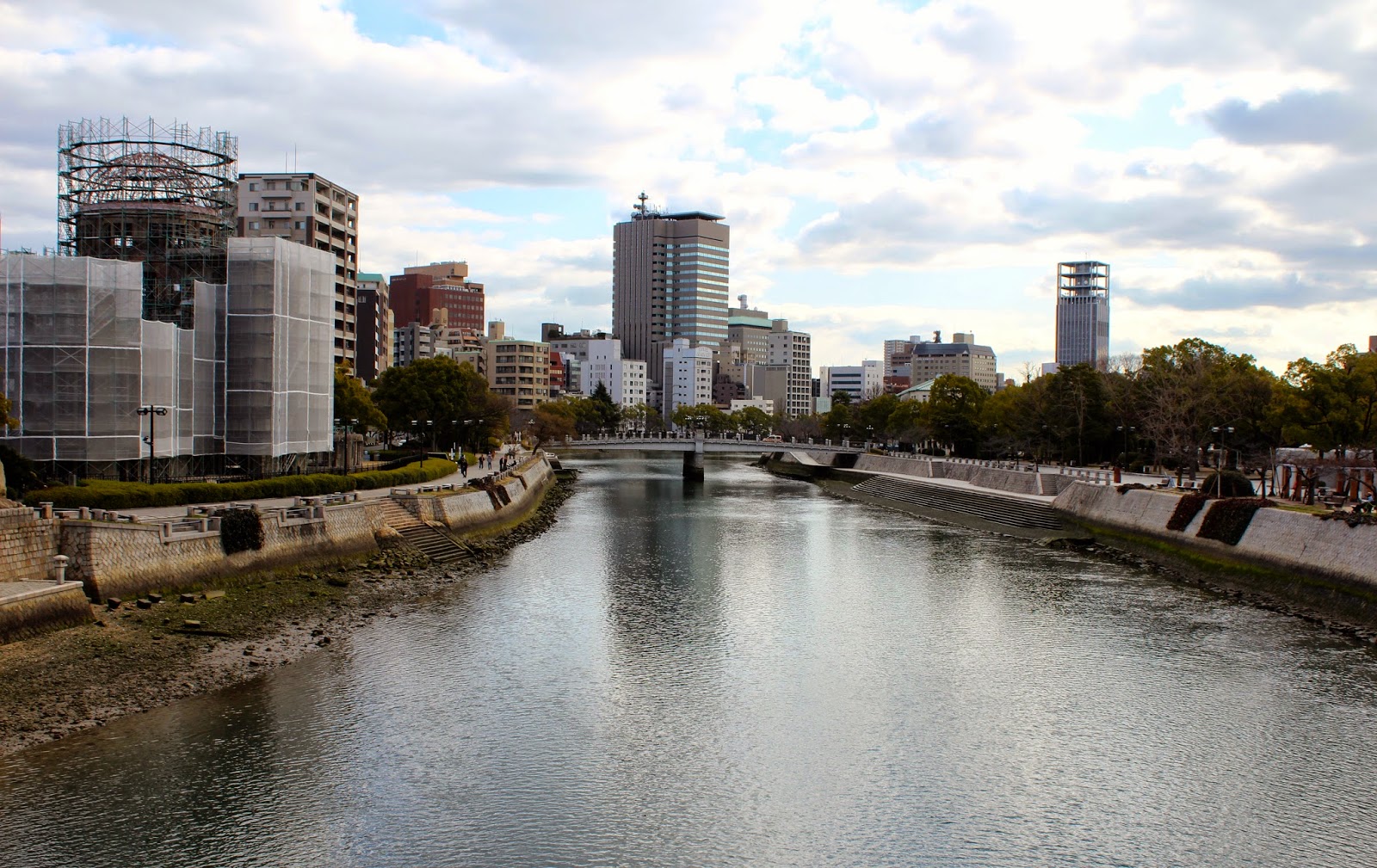At 8:15AM on August 6, 1945, the city of Hiroshima fell victim to the world's first atomic bombing. The entire city was virtually levelled; thousands upon thousands of lives were lost, with estimates of up to 140,000 deaths by the end of 1945.
Hiroshima is one of those places I'd never imagined I'd have the opportunity to see. I first read about Hiroshima in a book titled 'Sadako and the Thousand Paper Cranes'. This book is based on the true story of Sadako Sasaki, who was two years old when the atomic bomb was dropped on Hiroshima. Ten years later she was diagnosed with leukemia as a result of the radiation. Following hospitalisation, Sadako spent her time folding origami paper cranes hoping to make a thousand of them. She was inspired to do so by the Japanese legend that grants a wish to anyone who has created a thousand origami cranes. Her wish was simply to live.
Unfortunately Sadako's wish did not come true. Following her death in October 1955, Sadako's friends and schoolmates published a collection of letters in order to raise funds to build a memorial in her honour and for all of the children who had died from the effects of the atomic bomb. In 1958, a statue of Sadako holding a golden crane was installed in the Hiroshima Peace Park. At the foot of the statue is a plaque that reads: "This is our cry. This is our prayer. Peace on Earth".
Rudy and I arrived in Hiroshima late in the evening on the Shinkansen from Tokyo. Despite arriving late the restaurants were still open - our favourite restaurant during our stay was a place called Okkundou Mazemen (open until 3am), which served Japanese pasta noodles with spring onions / leek / pork / a soft boiled egg / seven secret spices and grated sesame seeds!
We explored Hiroshima over a full day and began with a walk through the Hiroshima Peace Park. We really liked the statue entitled "Mother and Child in Storm". This statue shows a mother protecting her children, 'symbolising love so powerful that it endures suffering and overcomes grief'. From there we walked through the Hiroshima Peace Memorial Museum. The Museum collects and displays belongings left by the victims, photos and other materials that convey the horror of the devastating and despicable event. We listened to audio as we walked through the museum and were both deeply saddened, especially by the individual stories of children whose lives were taken so tragically and horrifically.
We then continued our walk through the park stopping at the Cenotaph, the Hiroshima Hall of Remembrance, the Children's Peace Monument, the Peace Bell (which we both rung a number of times) and the A-Dome, (which was behind scaffolding but understood that it needed restoration for it to be preserved for future generations).
Hiroshima Castle
After some hot udon noodles and some sushi triangles, we continued our sight-seeing of Hiroshima and walked through the outer gates to Hiroshima Castle.
The area of Hiroshima (previously known as Gokamura – “five villages”) was initially settled way back in the day due to its location and rich soils that surrounded the delta of the Otagawa River and its tributaries.
Two clans prospered over time and eventually under feudal Japan one became the ruling family. By the 1590’s the Mori clan chose to build the castle due to the strategic location and because the river system could afford the castle great natural barriers.
In particular they built three concentric moats on progressively higher banks around the Castle so that water could be released from higher levels to flood the lower levels should an enemy get closer than anticipated. The castle was completed by the late 1590’s but the Mori clan would not enjoy it for long.
In 1600, the Mori clan was ousted by the iconic battle of Sekigahara. A very historic battle and pivot in time for Japan. Fukashima reigned the castle for 16 years after that battle, but due to repairing the castle from flood damage without the consent of the Tokogawa Shogunate in Edo in 1619, was banished and replaced by the Asano. They would reign over the castle and prefecture for 250 years until the Meiji restoration (1869).
After 1869 the castle became a military base for Japan until it was destroyed by the A-Bomb dropped in 1945. Thankfully it was rebuilt by 1958 to near its former glory and serves today as a museum to pre WWII Japan.
Thank you Hiroshima for allowing us to pay our respects. We think you are an amazing city… now to visit another Japanese jewel – Kyoto.
Next issue: Kyoto Kronicle.
Next issue: Kyoto Kronicle.
 |
| Mother shielding children from A-Bomb blast |
 |
| 3yo boy's bike and helmet exhumed 40 years after A-Bomb |
 |
| Black Rain - After A-Bomb blast |
 |
| Sadako's 1000 paper cranes inspiration |
 |
| Hiroshima's Cenotaph Memorial (A-Dome in background) |
 |
| Rivers around Hiroshima Peace Park |
 |
| A-Dome (being preserved) |
 |
| A-Dome was one of the few buildings to survive the blast (92% were destroyed) |
 |
| Outer gate to Hiroshima Castle |
 |
Hiroshima Castle Our favourite restaurant during our stay in Hiroshima - Okkundou Mazamen  Sheep-pig first in line for the Non-Reserved seating - Shinkansen Hiroshima to Kyoto |

No comments:
Post a Comment